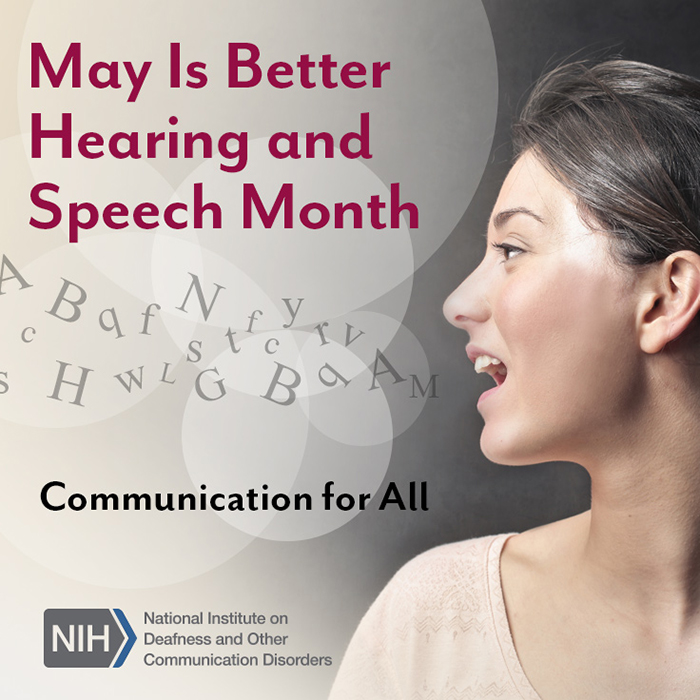
Click on the image or on this link-sharing page to use our social media sharing tools or embed the image in your website or blog. A Spanish-language version of this image is also available.
At least 20 percent of U.S. adults, at some point in their lives, have a significant problem with hearing, balance, taste, smell, voice, speech, or language. Communication disorders can compromise physical and emotional health and affect the social, educational, vocational, and recreational aspects of life.
To raise awareness about communication disorders, the National Institute on Deafness and Other Communication Disorders (NIDCD), part of the National Institutes of Health (NIH), joins the American Speech-Language-Hearing Association (ASHA) in observing Better Hearing and Speech Month each May. The NIDCD, ASHA, and many allied organizations educate the public about communication disorders, treatments, and current research that can improve the lives of those with hearing loss or with voice, speech, or language disorders. This year’s Better Hearing and Speech Month theme is “Communication for All.”
The NIDCD is committed to supporting a broad range of hearing health research to address barriers to care and to improve quality of life for the millions of American adults with hearing loss.
The NIDCD supports studies not only on how we hear, but also on technologies to help people hear better, such as hearing aids, cochlear implants, and assistive communication devices. In the U.S., one in six adults reports having some trouble hearing, and 28.8 million adults have hearing loss severe enough that they could benefit from hearing aids. Still, only one in four adults who could hear better with hearing aids has ever used them.
To help address this important public health issue, the Food and Drug Administration (FDA) Reauthorization Act of 2017 (PL 115-52) authorized the FDA to develop guidelines for a new class of less expensive, over-the-counter hearing aids. This could be one major step toward helping some people with hearing loss have access to devices that can enrich their lives.
The NIDCD provides science-based health information on many communication disorders, including voice, speech, and language disorders. In May, we encourage you to share our Better Hearing and Speech Month shareable image (also available in a Spanish-language version). If you manage a website or blog, you can syndicate NIDCD content to help raise awareness that many communication disorders are treatable.
Select NIDCD and NIH resources on hearing and hearing loss:

